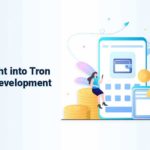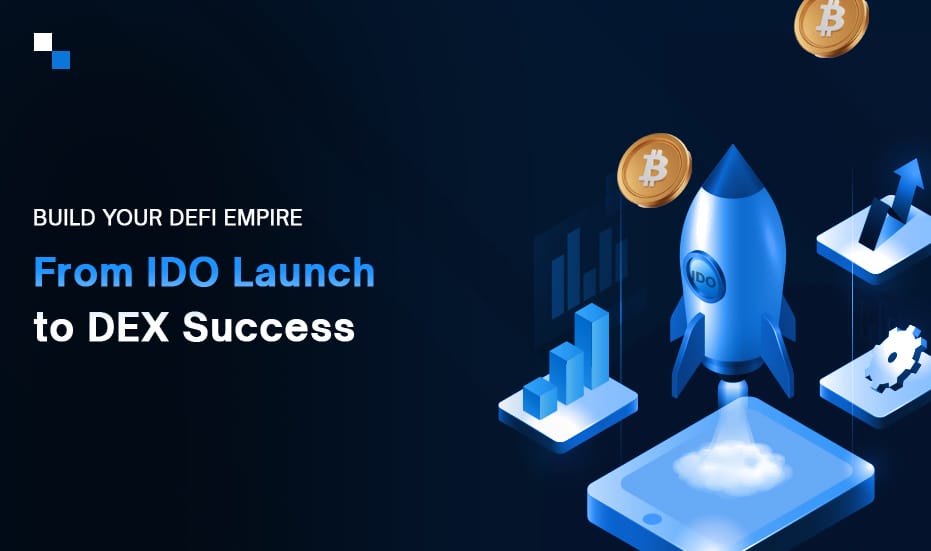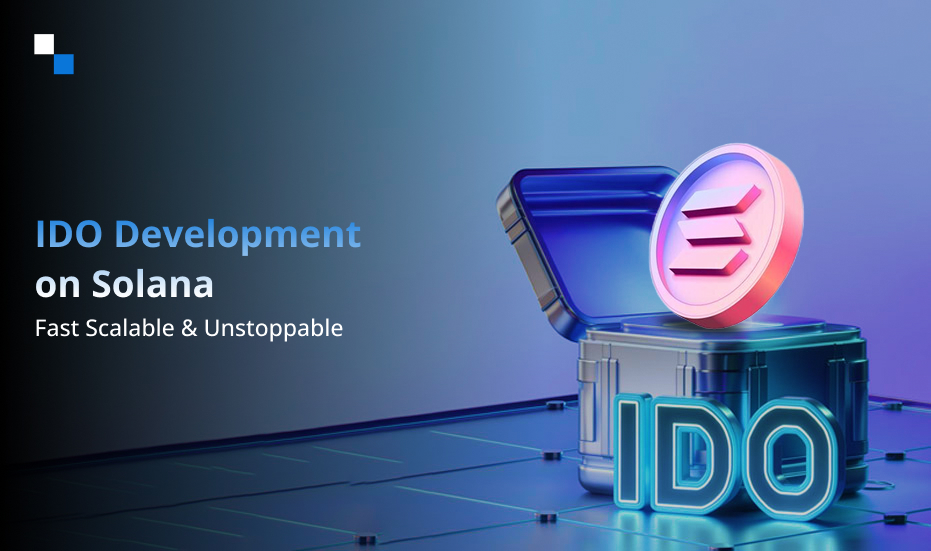
Everything You Want to know about Tron Wallet Development
November 24, 2021
A Guide to Develop Your Own Cryptocurrency
November 25, 2021The cryptocurrency market is growing at an incredible pace. The cryptocurrency industry’s upside potential and risk reduction have piqued investors’ interest. To attract more investors, there are a variety of tactics and procedures for distributing tokens. Initial DEX Offerings, held on decentralized exchanges, are the latest iteration of token offering procedures.
As a result, we’ll discuss the IDO method and the construction of the Initial DEX Offering in this post. According to Coindesk, the TVL (total value locked) in DeFi increased from less than $1 billion in January to more than $16 billion in December 2020, making 2020 a spectacularly successful year for decentralized finance. And DeFi’s present success has brought IDO to the fore.
What is IDO (Initial DEX Offering)
The initial DEX offering, or IDO, is a kind of fundraising. The IDO coin/token is distributed through a decentralized liquidity exchange that uses liquidity pools to allow traders to swap tokens. Pairs of crypto assets and stable currencies make up the liquidity pool. USDT/ETH, for example, is a liquidity pair. Depending on market conditions, traders can switch between crypto-assets and stable cryptocurrencies.
Any community member can use IDO to distribute tokens, and these tokens can represent any asset stored on a decentralized market. With a more cost-effective token sale approach, IDO is appealing to exchange users. IDO, for example, can provide speedy liquidity with little slippage thanks to the accessible liquidity pools on DEX. Binance DEX, Polkastarter, and Uniswap are examples of DEXs that provide IDO services.
The IDO model’s advantages
Transparent and equitable fundraising
Fundraisers who use the IDO model don’t always need to rely on traditional private investments to get started. The token sale is open to the public, and investors can purchase many tokens at a reduced price. They will benefit handsomely by reselling these tokens to the broader public. Furthermore, anyone, not just private investors, can organize or participate in IDO because no CEX or approval is required to begin fundraising.
Instant Liquidity
Project coins quickly gain liquidity with IDO. The liquidity pool ensures that liquidity is available at all times and that there is no price slippage. Many altcoins may only be purchased through a DEX, which allows for low-volume transactions. IDO expands the number of ways to distribute project tokens while also increasing financial inclusion.
Trading in real-time
Investors can begin trading as soon as a project’s token is released. As a result, traders attempt to purchase a new token as quickly as possible and then sell it higher during the IDO. For example, when the UMA protocol raised funds, the original token price of $0.26 skyrocketed to around $2.
Cost-effectiveness
DEX is a decentralized exchange that runs on self-executing smart contracts. If a project uses DEX directly, it has to pay the “gas” fee for installing a new smart contract that manages the liquidity pool and the asset’s token. Even yet, DEX charges a minimal cost for exchanges like Uniswap, around 0.3 percent.
Transactions that can be trusted
DEX makes deals and records them on the blockchain using smart contracts, allowing for secure transactions. DEX is also less likely to be attacked by hackers because it does not retain your cash.
Create your IDO Platform with US
Schedule Free DemoHow do you start an IDO?
Let’s talk about the development of the Initial DEX Offering now. Projects are promoted to the general public via launchpad or platforms dedicated to IDO. Under some conditions, investors like you and me can purchase tokens before they are accessible on the market. The IDO token is now available on DEX. There are two types of public sale procedures:
1. The issuer places limited sell orders at progressively higher price levels.
2. The issuer holds an auction, resulting in a sale price determined by demand and supply.
Automated market maker (AMM)-based exchanges such as Uniswap and Balancer are used for listing. To create a liquid secondary market for a token, an issuer uses its tokens and proceeds from sales to create pool liquidity.
Liquidity incentivization is a term that refers to a range of initiatives that the token issuer might use to encourage people to use their product or service. Nowadays, mining is prevalent, and it can provide significant incentives for individuals to support the platform.
The IDO’s Future
To solve the shortcomings of its predecessors, the ICO and IEO, an IDO strategy has arisen. The DEX approach does raise donations because it does not require permission to arrange the fundraising event. Only DeFi projects have so far received funding through IDO.
There’s no reason why initiatives from another crypto ecosystem couldn’t use this method to raise funds. On the other hand, these projects will need to get existing DeFi users to invest in the project’s tokens.
For startups, IDO is a more appealing capital-raising option. Even though this concept requires further development, IDO can succeed in the market. Furthermore, the model’s effectiveness is being confirmed by a growing number of examples. The popularity of the Initial DEX offering may rise as a result of IDO platforms with governance mechanisms and price-fixing in the liquidity pool. As a result, if we continue to develop the Initial DEX Offering, we will shortly reach parity.
Why choose Antier Solutions?
We can assist you with creating and submitting an IDO token or establishing an Initial DEX Offering platform because we have extensive software development experience. You’ll attract users and get the most out of IDO if you employ such a platform. Creating your IDO platforms allows you to build your community of fundraisers and investors, as well as set all of the required circumstances for your business’s success.



